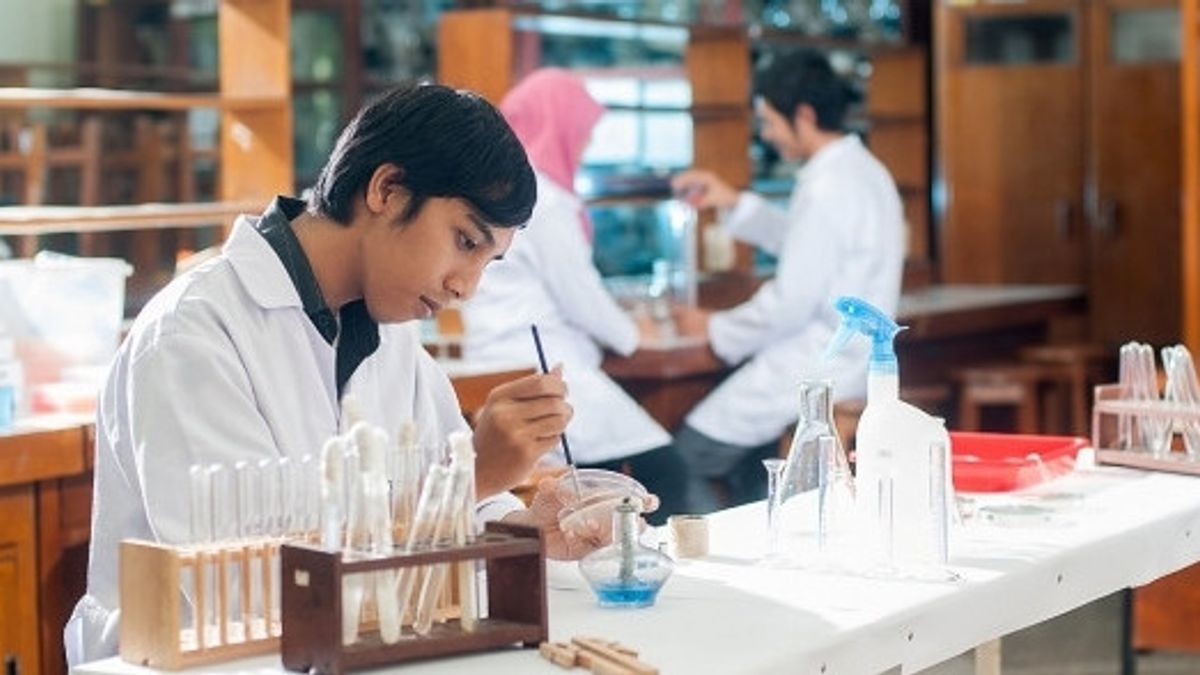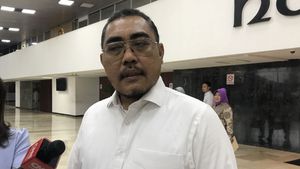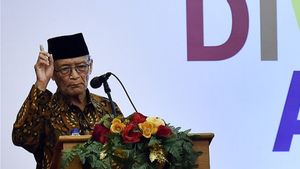JAKARTA - Every May 2, we are never absent to commemorate National Education Day (Hardiknas). However, there are still a lot of homework to do. One of them is about research innovation that has stalled for almost two decades. Because of its withdrawal, Indonesia is far behind Malaysia, which previously imported teachers from Indonesia. So what is the root of the problem?
One of the qualifications to see how developed a country's innovation and research fields are by looking at the Global Innovation Index (GII). The irony is, since 2013 until now, Indonesia's GII rank has never gone up from position 85. Our research has stalled. In fact, in 2013 to 2015 it was withdrawn.
The GII report was produced by Cornell University, INSEAD and the World Intellectual Property Organization. The aim is to measure the factors forming innovation by understanding in detail the human aspects behind innovation in order to enhance economic development.
There are seven factors measured by this survey, namely, human development and research (human capital and research), institutions (institutions), infrastructure (infrastructure), market progress (market sophistication), business progress (business sophistication), scientific outputs. ), and creative outputs. The score scale used is 0-100.
In 2013, GII Indonesia was in the 85th rank. The following year it fell two steps to 87th. Worse, in 2015 it fell to 97th position. The GII Indonesia ranking could only return to position 85 in 2019. And last year, the position was still the same.
Left behind from MalaysiaIf you look at the latest GII data in 2020, Singapore is the only ASEAN country that is in the top 10 GII with a score of 56.6. Meanwhile, those in the top 50 were Malaysia (33rd) with a score of 42.4, Vietnam (42) with a score of 37.1, Thailand in 44th place with a score of 36.7 and the Philippines (50) with a score of 35.2.
In fact, Indonesia's innovation and research are too far from neighboring Malaysia. Whereas in the past the neighboring country had learned from Indonesia.
In the New Order era, Indonesia often sent educated teachers to Malaysia. The export of teachers to Malaysia also comes from the direct request of the Malaysian Government as a follow-up to the re-establishment of the friendship institution between the two countries. But that was then.
Now Malaysian education, especially in terms of research and innovation, has surpassed Indonesia. The proof, in the GII 2020 report (pdf) Malaysia is perched in the position of the two countries with the most innovative middle to upper income. This neighboring country is exactly one level below China.
Last year, GII Malaysia was in 33rd position. Up two places from the previous year. For the record, they managed to increase their score in the innovation output sub-index while the innovation input sub-index was stable.
From the innovation input sub-index, Malaysia is noted to have strength in the tertiary education sub-pillar. Malaysia is ranked fourth in terms of graduating bachelors in science and engineering. In addition, the neighboring country is also ranked 17th as a country that has the three best universities.
Meanwhile, in terms of spending on innovation, Malaysia also posted relatively good results on the intangible assets sub-pillar and was ranked seventh in terms of global brand value. One of the reasons is the success of Petronas in leading 60 brands to enter 5,000 of the world's best brands.
Then several other indicators that have been successfully improved are about the ease of protecting minority investors, market capitalization, collaboration in university and industrial research, high technology imports, high technology exports, and exports of creative goods.
Malaysia, which once learned from Indonesia has now succeeded in surpassing its "teacher". The question is why Indonesia can lag behind Malaysia?
Root of the problemAdvisor to the Center for Innovation Policy & Governance, Yanuar Nugroho, in his writing in the February 13, 2021 edition of Tempo Magazine, explained that the most fundamental problem with Indonesian research and innovation is that these two things have never really been a priority in this country. According to him, the discourse on "science and technology" which was attached to the New Order era and the figure of BJ Habibie now seems to be evaporating from the public sphere.
Likewise in development planning, science, research, and technology as well as innovation, since reform until 2014 it has never been a national priority. "This means, since President Abdurrahman Wahid, Megawati Soekarnoputri, to Susilo Bambang Yudhoyono," wrote Yanuar.
It was only in the first period of the administration of Joko Widodo (Jokowi) -Jusuf Kalla that ipten and innovation emerged as national priorities, although in the manifestation they were far from being wild. For example, said Yanuar, about the construction of 100 science-techno parks in five years which only achieved five. This achievement is as sad as the budget allocated by the government for research.
"There has been no significant change in the second period of Joko Widodo-Ma'ruf Amin ... Even in the budget, from the total 2021 APBN amounting to Rp2,750 trillion, the allocation for research is only Rp.9.9 trillion, this is actually down from the 2020 State Budget," wrote Yanuar. "This all emphasizes that research and innovation have never been a priority."
For this reason, Yanuar said the dream of Advanced Indonesia in 2045 could be a dream if research and innovation have never been masters in their own country. "That is why we must prioritize research and innovation in one orchestration," he said.
BERNAS OthersThe English, Chinese, Japanese, Arabic, and French versions are automatically generated by the AI. So there may still be inaccuracies in translating, please always see Indonesian as our main language. (system supported by DigitalSiber.id)









